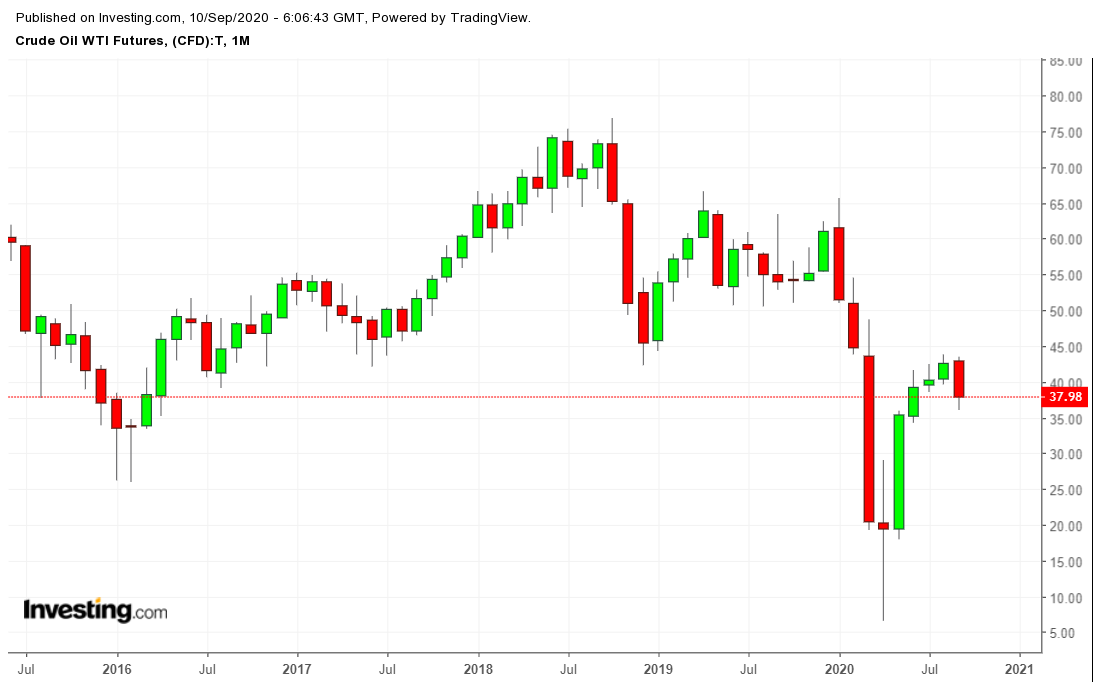For the past two months, this column has warned readers of demand weaknesses in the oil market. (See, for example, here, here and here).
Indeed, oil prices dropped rather dramatically this week. WTI, which had been sitting comfortably above $40 per barrel fell 7% to $36.76 on Tuesday. Brent suffered similar losses, dropping over 5% to $39.78 per barrel.
In past weeks, we have frequently examined the shrinking oil demand and the struggling economy in the U.S. market, which is the largest global oil consumer.
However, China also deserves attention. It's the world’s largest oil importer and the only major economy expected to show growth this year.
While there are signs that Chinese demand for crude oil is set to drop over the next few months, this expected dip will largely be the result of resolvable technical and regulatory issues, not larger structural concerns with the Chinese economy that would hurt global oil prices in the longer term.
The decline in oil prices this week was precipitated by a cut in Saudi Arabia’s official selling prices (OSPs) to Asia. Recall that Chinese and other Asian oil buyers were disappointed in early August when Saudi Arabia failed to cut its September OSP’s to Asia as significantly as most were expecting. Now, Saudi Arabia appears to be trying to correct the disconnect seen in August with a deep cut to its October OSPs for Arab Light crude to Asia.
Although many analysts are interpreting this as a sign of poor demand and economic fragility, there are indications that demand weakness—at least when it comes to China—will be a temporary phenomenon.
1. Slowing Refinery Runs
China’s independent refineries look poised to slash their purchases of crude oil by as much as 40% in September and October. This is likely because the independent refineries have reached the import quota limits set by the Chinese government. Rather than stop operating, they may draw on stored oil. This is obviously not good for those who have been supplying oil to the independent Chinese refineries, but it is a result of government control and not market issues in Asia.
It would be a much more negative sign if refiners were cutting back on purchases because of a lack of demand for their products as opposed to a regulatory requirement. Some analysts believe that the Chinese government will grant extra quotas for these refineries in the fourth quarter, which would mean that the drop in imports could only last a few months.
2. Port Congestion
In August, China experienced extreme congestion at its ports due to a large influx of crude oil, which resulted in some closures and a lack of storage space. The congestion has been reduced, but there is still a backlog of ships waiting to unload crude oil.
The good news: lower imports in September and October will help decrease congestion.
3. Economic Stimulus
After China’s economy suffered in the first quarter of 2020 due to shutdowns from the coronavirus, the Chinese government instituted a major economic stimulus plan with an emphasis on construction. This has meant an uptick in diesel fuel demand which started in March and April. About 30% of China’s total oil demand is used for diesel fuel, and it has outperformed gasoline and jet fuel demand in China in 2020.
This is in contrast to the United States, where gasoline demand has outperformed diesel and jet fuel. China’s diesel fuel demand is expected to show a 2% boost over the course of 2020 compared to the year before, even with the coronavirus disruption. 2020 will exceed diesel fuel consumption in China in 2019 by 60,000-90,000 bpd.
Bottom Line
Overall, the indicators show that Chinese oil exports are likely to pick up before the end of the year as technical issues are resolved. Lower oil prices in the autumn will also motivate China to import more oil for refining and storage, because China will prepare in case prices recover further in 2021 as other global economies start to pick up.
However, market watchers should remember that China is not the entire oil market, and there are still serious economic and consumption weaknesses plaguing the U.S. and European economies that show little sign of abating.
